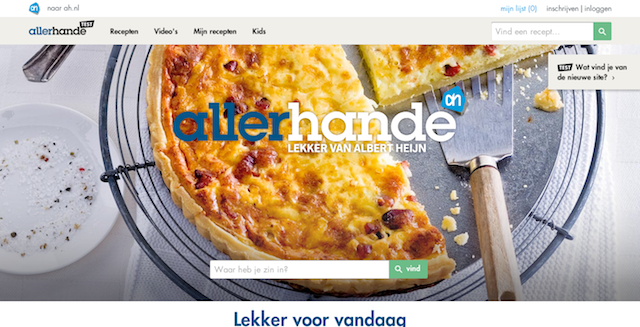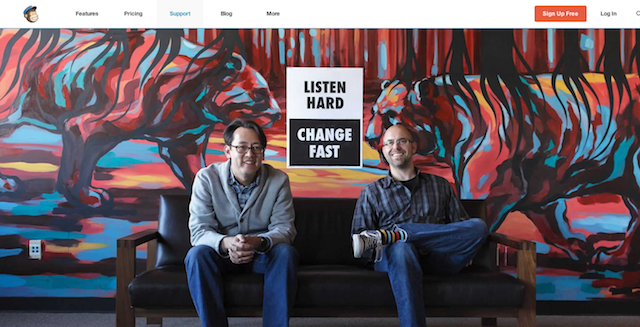
6 Tips That Will Turn Your Online Shop Into A Strong Brand
Wouldn’t you like your online shop to stand out in the crowd? To leave a strong and lasting impression on your target group? In this post we will explain what really distinguishes a strong brand from the average online shop, and how you can make the first step towards turning your shop into a strong brand yourself.
Online business has opened endless opportunities for small merchants to compete with the big fish on a more equal footing (social media, content marketing, SEO). However small merchants often forget to integrate in their efforts that one crucial element that distinguishes Nike from being just another shoe store: “The Greater Meaning”, “The Big Idea”, or whatever you like to call it.
What really distinguishes Nike from other stores selling sport shoes? Yes, they have a bigger budget. But that’s not the core difference in their offering. The core difference is that Nike is in fact not selling you the shoes as their main product. What Nike is really selling you is the attitude. The just do it. The strength, the emotions and the sweat! Nike sells you the idea that if you buy this pair of shoes not only will you become faster and stronger, you will become more elegant and cool as well. In other words, emotional attachment is created.
An ordinary shoe store, on the other hand, only sells you the shoe. There is nothing wrong with that per se, except that in the eyes of the customer the latter shop is nothing more than a concentrated pile of products. This is not a very strong competitive position.
However, with all the options offered by today’s content management systems and innovative tools out there it has become possible for an ordinary, good willing, and low-budget ecommerce player to turn his business into a strong brand. What it takes is a healthy dose of ambition, a couple of tools, and a realization of how you can create meaning with your online shop.
Check out these 6 tips of how to create meaning and emotional attachment with your online shop:
1. Provide benefits, not products
The first step in transforming your online shop into a strong brand is to stop thinking about what products you offer, and start thinking about the needs of the target group(s) you are addressing. Let’s say you sell cosmetics. Then go out and research what type of people buy from you and then find out what bigger issues these people are having or what they care about. You could for example offer content about how to handle issues with allergies, or you could give updates about the latest trends. The actual product generally only provides 10% of the actual value for the customer, a fact not always appreciated by businesses because product sales are the only thing that provides value for them. But maximize your customers' value and you will maximize your own.
A good example of a company that did understand this concept is the Albert Heijn supermarket chain in the Netherlands, which started with a concept that’s being deployed in an increasing amount of other chains. On their website and in the beginning of each Albert Heijn store one can find recipes based on the exact ingredients that can be bought in the shop. And quite nice recipes as well! By offering this convenient information they extended the meaning of the supermarket beyond ‘a stock pile of products’, creating extra value for everybody.
2. Realize what subculture(s) you serve and establish a coherent tone
After understanding who your customers are and what are their needs are, it is important to establish a coherent communication style throughout your website. The way you speak should connect to your target groups. A shop selling expensive suits can be expected to have a very different communication style than a shop selling skateboards. Make your style explicit and follow it through, whether it is at the product descriptions, the contact section, or in your live chat system.
3. Focus on unique elements
If you’re focusing on building your brand, don’t forget that engagement and consumers’ participation is the key and in order to achieve it you should give space for sincere social interactions (between friends or even through customer support team). Honesty and unique support will enhance your evaluation among customers and that’s why being present during your client’s shopping cycle is so relevant, even during online shopping. Tools such as live chat allow you to be there, at the right time, in the right place to assure conversion and sell.
4. Associate your brand with the things that your target groups love
Big brands do this all the time, mostly in the form of celebrities. Unfortunately celebrities aren’t so easy to pitch and most of them have busy schedules, but you can still use the concept with plenty of positive and royalty-free associations. If you know who your customers are, you should know what turns them on. Then look for ways to build associations between your shop and these elements.
Harley Davidson is doing a great job in creating associations with travelling and adventure. Big chance that you're not selling motorcycles, but if you are selling football apparel for example, you could dedicate a section of your website to the match results or transfer news. You get the idea. The more connections you make between your shop and the passions of your customers, the more of an emotional attachment you will create.
5. Create an ecosystem around your brand
Extend your message beyond your website, using media such as Facebook, Twitter, Google+, Pinterest, etc. Stressing the power of social media would be kicking in an open door, but the importance lies in combining your social efforts with the big idea of your online shop. These media have made it incredibly easy to make connections and associations with other players in your industry, so use it.
Also there are many tools out there for you to create lean content for your audience. Approach your consumers with innovative 360º online experiences and give them the opportunity to interact with each other. Let them share, recommend and talk about you. Be creative about your brand and remember to make it all customer-centric (against the it’s all about the product tendency). Partnerships are also a valuable asset for this point as they’ll increase your brand reputation, linkages and associations and even brand value.
6. Add a face to your website
People remember people more than anything else, so don’t forget to add that human element to your site. Dedicate a section of your site to yourself or your team if you have one, a well thought out ‘About Us’ page. Use it to show who you are, what your values are and what you believe in. Show that you are part of the subculture you are serving, that you are somebody your customers can relate to. And if you just so happen to be a 70+ year-old selling skateboards, maybe it's an idea to have your grandson take on this PR role for you. Our live chat tool is based on this power of human connection as well, extending the human element to every part of the website.
One of the best examples of an 'About Us' page we could find is from Mailchimp, the email software company. It presents the two founders in a friendly and accessible light, it gives you an elevator pitch about their software, and then proceeds with telling you more about some of the people working at Mailchimp and the culture that connects them, as well as displaying some of the nonprofit causes they invest in. This is a page that gives a 360º overview of a friendly and innovative company that you would really like to do business with.




